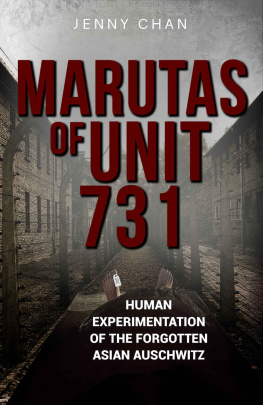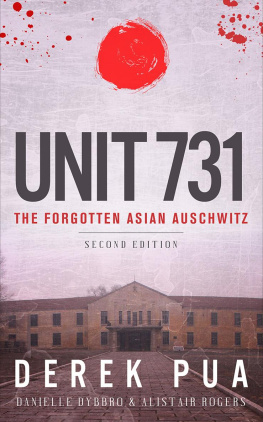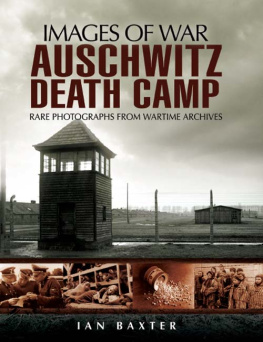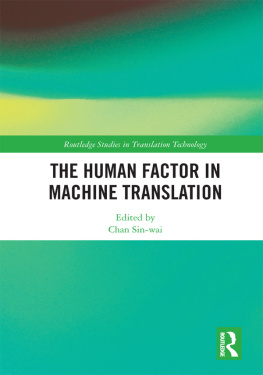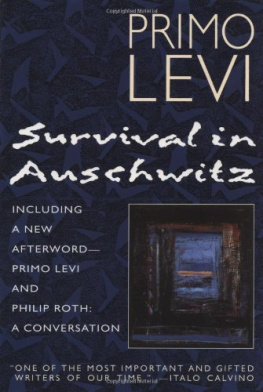Jenny Chan - Marutas of Unit 731: Human Experimentation of the Forgotten Asian Auschwitz
Here you can read online Jenny Chan - Marutas of Unit 731: Human Experimentation of the Forgotten Asian Auschwitz full text of the book (entire story) in english for free. Download pdf and epub, get meaning, cover and reviews about this ebook. year: 2020, publisher: Pacific Atrocities Education, genre: Non-fiction. Description of the work, (preface) as well as reviews are available. Best literature library LitArk.com created for fans of good reading and offers a wide selection of genres:
Romance novel
Science fiction
Adventure
Detective
Science
History
Home and family
Prose
Art
Politics
Computer
Non-fiction
Religion
Business
Children
Humor
Choose a favorite category and find really read worthwhile books. Enjoy immersion in the world of imagination, feel the emotions of the characters or learn something new for yourself, make an fascinating discovery.
- Book:Marutas of Unit 731: Human Experimentation of the Forgotten Asian Auschwitz
- Author:
- Publisher:Pacific Atrocities Education
- Genre:
- Year:2020
- Rating:4 / 5
- Favourites:Add to favourites
- Your mark:
- 80
- 1
- 2
- 3
- 4
- 5
Marutas of Unit 731: Human Experimentation of the Forgotten Asian Auschwitz: summary, description and annotation
We offer to read an annotation, description, summary or preface (depends on what the author of the book "Marutas of Unit 731: Human Experimentation of the Forgotten Asian Auschwitz" wrote himself). If you haven't found the necessary information about the book — write in the comments, we will try to find it.
Jenny Chan: author's other books
Who wrote Marutas of Unit 731: Human Experimentation of the Forgotten Asian Auschwitz? Find out the surname, the name of the author of the book and a list of all author's works by series.
Marutas of Unit 731: Human Experimentation of the Forgotten Asian Auschwitz — read online for free the complete book (whole text) full work
Below is the text of the book, divided by pages. System saving the place of the last page read, allows you to conveniently read the book "Marutas of Unit 731: Human Experimentation of the Forgotten Asian Auschwitz" online for free, without having to search again every time where you left off. Put a bookmark, and you can go to the page where you finished reading at any time.
Font size:
Interval:
Bookmark:
Marutas of Unit 731
Human Experimentation of the
Forgotten Asian Auschwitz
JENNY CHAN
Pacific Atrocities Education
Marutas of Unit 731
Human Experimentation of the
Forgotten Asian Auschwitz
Written by
Jenny Chan
Editor
Barbara Halperin
Published by Pacific Atrocities Education
All rights reserved. Printed in the United States of America. No part of this book may be reproduced in any manner whatsoever without written permission except in the case of brief quotations embodied in critical articles and reviews. For information, address Pacific Atrocities Education, 730 Commercial Street, San Francisco, CA 94108.
Paperback ISBN: 978-1-947766-32-7
E-book ISBN: 978-1-947766-16-7

Unit 731 was a secret biological and chemical warfare research complex created and developed by the Imperial Japanese Army. Although it provided research opportunities for the brightest Japanese scientists in WWII, thousands of people died as victims of gruesome experiments performed ostensibly in the name of science. At the height of the research facility, no employee of Unit 731 foresaw its demise.
As Emperor Hirohito signed the surrender agreement, documenting the end of the Japanese Empire, an order was issued to leave no survivors and every captive was killed. By the time the Soviets arrived in Manchuria, they found a destroyed facility with animals in cages, human remains, and most of the staff already evacuated.
Under the supervision of Ishii Shiro, Unit 731 and its subsidiaries not only regularly conducted vivisection on humans, they were also proud of the weaponry produced as a result. Initial appalling experiments at the Anta testing ground included testing the effectiveness of various bombs used on victims tied to stakes, exposure to extreme cold to document the effect of frostbite on victims limbs, and exposure to severe changes in air pressure to test human limits for the purpose of airplane development. These were only a few of many experiments conducted in the decade in which the unit was active.
When scientists needed more victims for human experimentation, they simply had to fill out a request and, the majority of the time, the Kwantung Army would make a special human delivery. The bound victims heads were covered with sacks as they were transported on trains and then in vehicles through underground tunnels to the gate of Unit 731 where experiments would commence. Otherwise known as maruta, which means logs in Japanese, Unit 731 were not thought of as humans but merely as test subjects. Once exhausted by the experiments, marutas were viewed as unusable material and subsequently killed. As stated by Mitomo Kazuo during the Khabarovsk Trial, At the beginning of September 1944, two Russians were shot dead in my presence by a gendarme at the cattle cemetery and were buried there. This was done on the orders of Lieutenant Nakajima. They were shot because no more experiments could be performed on them in view of their exhausted state and unsuitability for further experimentation. This kind of brutality in Unit 731 and that of its subsidiaries was not an isolated incident for the Imperial Japanese Army during WWII.
My grandmother had always told me about their survival stories during WWII. She told me about the executions that regularly were carried out in Kings Park in Hong Kong during the Japanese occupation. Under threat of severe punishment, families were forced to trade all their wealth for military yen. Like most women at the time, my grandmother avoided being outside and darkened her face with charcoal to prevent being raped by Japanese soldiers. However, having been educated in the United States, I had not learned in school about the Pacific Asia War brutality and had ignored most of what my grandma told me until I read the book Rape of Nanking.
Regretting not listening to my grandmother, my friend and I co-founded Pacific Atrocities Education with the purpose of visiting the forgotten past of the WWII Pacific Theater. Curiosity led me to visit comfort women in Shanxi in Northern China in 2014 which then led to my writing the historical fiction, The Undrowning Lotus. In 2015, I attended a conference about the Pacific Asia War hosted by the Global Alliance. Wang Xuan spoke about villagers with rotten legs who were victims of biological warfare waged by the Imperial Japanese Army. It was there when I first learned about Unit 731. The biological weapons victims were unable even to put socks on their legs which never healed from glanders and anthrax left on Chinese soil during WWII. Seventy years after the war, through Wang Xuans relentless efforts, a means of curing rotten legs finally was found. To learn more about Wang Xuan and her work, check out Seeking Justice for Biological Warfare Victims of Unit 731.
After years of researching Unit 731, I was appalled by the fact that most of the scientists who worked there suffered no consequences nor faced any criminal justice charges due to immunity granted to them by the United States government. Since the U.S. scientists were unable to conduct the same types of human experiments, they were more than eager when the Japanese scientists offered them their real-world experience in exchange for their freedom. For the readers enjoyment, I did not insert any pictures of human experimentation in this book, but readers can check this link:
https://www.pacificatrocities.org/human-experimentation.html.
US-Asia Relationship
U.S. intervention in Japan began in 1851 when Matthew Perry arrived in Japanese waters with a squadron of Navy ships authorized by President Millard Fillmore. Japan had been an isolated country and had captured many U.S. sailors in its waters. Perrys mission was two-foldto rescue the sailors who were destined for imprisonment or death in Japan and to open up Japan for trade.
Since Japan had been isolated for centuries, the West was far more militarily advanced and in the area of weaponry. With Matthew Perrys gunboat diplomacy, a steamboat in Japanese waters bearing gifts for the emperor helped convince the Japanese of the Wests superiority. The Japanese accepted an agreement to release the U.S. sailors as well as open a port for refueling.
During that time period, many Americans believed in Manifest Destiny, meaning that they were destined by God to rule the North American continent as well as Gods wish to rule the world. While the Qing Dynasty of China failed to catch up to the modern world, missionaries were rushing to Guangdong, China to fruitlessly convert Chinese into Christians. Merchants were also busily trading opium for Chinese tea and silk. By the mid-1800s, China was carved up like a melon by the militarily superior Western Powers.
Japan saw what had happened to China as a result of its inability to advance in technology, combined with Matthew Perrys demand for the Treaty of Kanagawa on March 31, 1854, which opened two Japanese ports, Shimoda and Hakodate. The treaty also granted the U.S. rights, thus leading to the start of Japans era of industrialization during which Japan quickly learned about and adapted western ways.
Kaneko Kentaro was born a year after Matthew Perrys first arrival in Japanese waters and became one of the most influential politicians in Japans modern history. Born into a samurai family of the Fukuoka Clan, the Japan that Kanekos birth was very different from that of his parents era, the Tokugawa era where shoguns were considered the most powerful class and Japan was under feudalism. Matthew Perrys arrival had shown the people the Tokugawas policys weakness and, given the famine at the time, led to an uprising of the peasant class.
Next pageFont size:
Interval:
Bookmark:
Similar books «Marutas of Unit 731: Human Experimentation of the Forgotten Asian Auschwitz»
Look at similar books to Marutas of Unit 731: Human Experimentation of the Forgotten Asian Auschwitz. We have selected literature similar in name and meaning in the hope of providing readers with more options to find new, interesting, not yet read works.
Discussion, reviews of the book Marutas of Unit 731: Human Experimentation of the Forgotten Asian Auschwitz and just readers' own opinions. Leave your comments, write what you think about the work, its meaning or the main characters. Specify what exactly you liked and what you didn't like, and why you think so.

